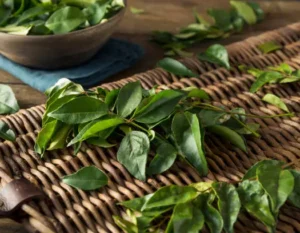Acacia catechu, also known as catechu tree or khair, is a deciduous tree that is native to India, Southeast Asia, and China. It is a member of the legume family and can grow up to 15 meters tall. The tree has a dark brown bark that peels off in long strips. The branches are slender and have sharp spines. The leaves are bipinnate, with 4-8 pairs of leaflets. The flowers are small and yellowish-white. The fruit is a flat pod, containing several seeds.
Botanical description –
- Size and Growth: Acacia catechu is a medium-sized tree that can grow up to 15-20 meters (49-66 feet) in height, with a trunk diameter of around 50-70 cm (20-28 inches). The tree often has a spreading crown with feathery foliage.
- Leaves: The leaves of Acacia catechu are bipinnate, which means that each leaf is divided into multiple pairs of leaflets. The leaflets are small and oblong, with a dark green color. Each leaf typically has 20-40 pairs of leaflets.
- Flowers: The tree produces fragrant, pale yellow to cream-colored flowers that are arranged in spherical clusters called inflorescences. These inflorescences are usually located at the end of branches. The individual flowers are small and have five petals.
- Fruit: The fruit of Acacia catechu is a flat, elongated pod, often curved, and about 5-12 cm (2-4.7 inches) long. These pods mature and turn dark brown as they dry out. Inside the pods are several small seeds.
- Bark: The bark of Acacia catechu is dark brown to black in color and deeply fissured. It contains a high concentration of tannins and is used for its astringent and medicinal properties.
- Wood: The heartwood of Acacia catechu is dark brown to reddish-brown in color and is known for its hardness and durability. It is used in woodworking and for making furniture.
Chemical Constituents –
The major chemical constituents are:
- Catechins and Catechu Tannins
- Terpenoids
- Flavonoids
- Carbohydrates
- Phenolic Acids
- Minerals
- Alkaloids
- Trace Elements






Reviews
There are no reviews yet.